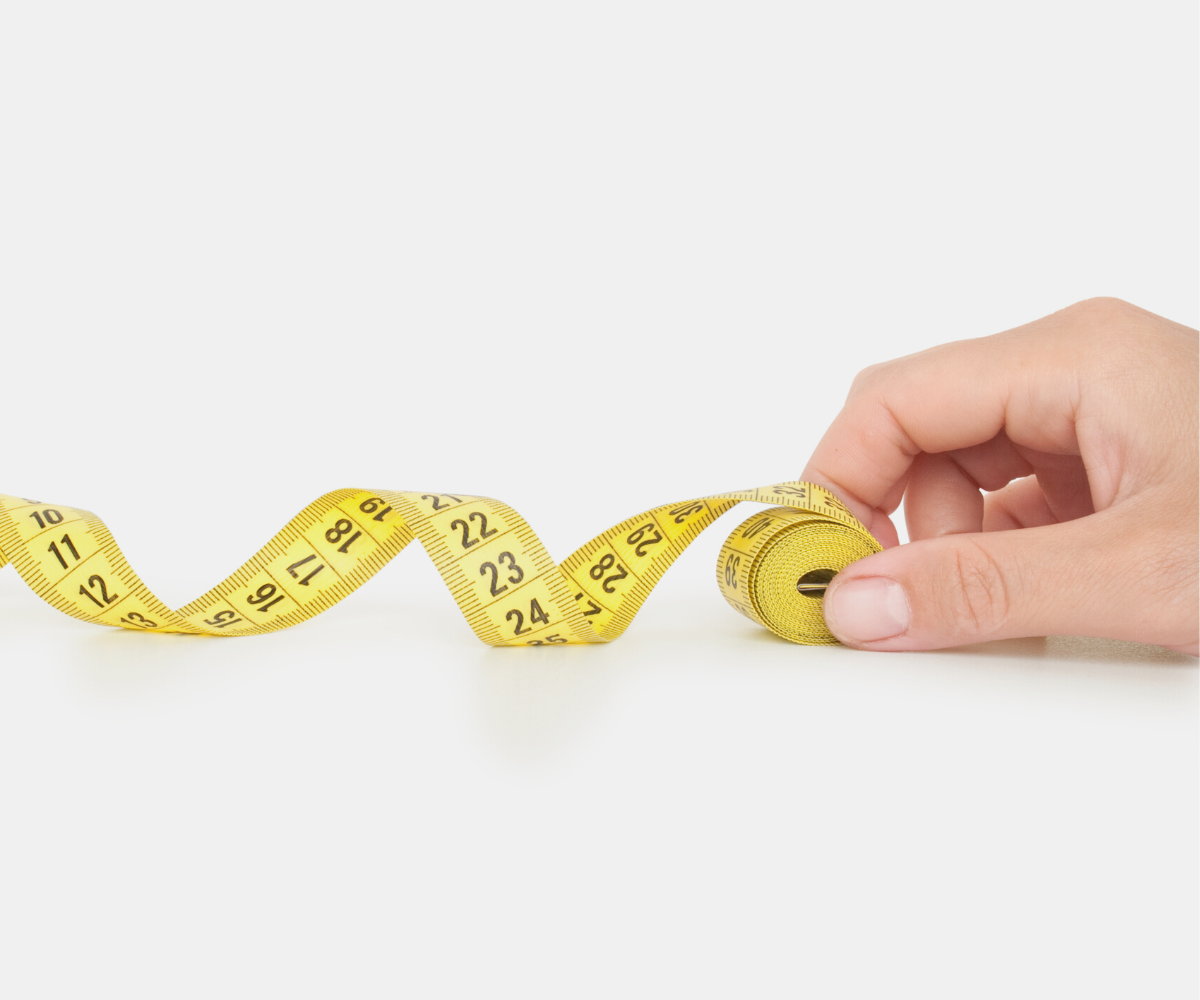
Does the Finger Length Testosterone Test Work?

The finger length Testosterone test looks at the difference between the length of your ring and index fingers (2D:4D ratio) as a way to hypothetically measure Testosterone levels.
A longer ring finger is believed to indicate higher prenatal Testosterone exposure and potentially higher Testosterone levels in adulthood. A longer index finger is said to suggest lower prenatal Testosterone exposure and potentially lower current Testosterone levels.
This theory lacks scientific evidence and is not an accurate measure of Testosterone levels. We’ll discuss the reasoning in-depth and provide information on how to accurately measure Testosterone.
Why is the Finger Length Testosterone Test Unreliable?
Research suggests that the finger length ratio can serve as a non-invasive biomarker of prenatal Testosterone exposure. This is because men generally have different finger lengths than women due to greater Testosterone exposure in the womb.
However, accurately measuring prenatal Testosterone exposure is challenging, and studies investigating this ratio have had small sample sizes and have been difficult to replicate.
Prenatal Testosterones levels also aren’t necessarily an indicator of adult Testosterone levels. Low Testosterone has many causes, including environmental and lifestyle factors along with naturally declining levels as men age.
Research explores not only the relation of finger length ratio to Testosterones levels, but also its relationship to social markers and certain behaviors and diseases.
While associations have been reported between the 2D:4D ratio and various sex-dependent factors and conditions, more research is needed to establish these associations definitively.
Twin studies have shown that the 2D:4D ratio is highly inheritable, but genetic variants associated with this trait are not directly linked to adult Testosterone or sex Hormone-Binding Globulin (SHBG) levels.
Relying solely on the Finger Length Testosterone Test will not provide an accurate diagnosis of low Testosterone levels.
Other factors can influence finger length variations, and not all men with low Testosterone will exhibit these traits. We recommend consulting with a healthcare provider for an accurate diagnosis and discussion of treatment options.
How Does the Finger Length Ratio Differ Between Men and Women?
As we’ve said, the finger length ratio between men and women is influenced by prenatal Testosterone exposure. Because men are exposed to more Testosterone in the womb, they typically have a different finger length ratio than women.
Men typically have a shorter second digit (index finger) compared to their fourth digit (ring finger), resulting in a lower 2D:4D ratio.
Women typically have the opposite ratio, with the index finger being longer than the ring finger.
This is a generalization, and not all men and women fall into this pattern.

How Do I Measure My Testosterone Levels?
Since the finger length ratio isn’t an accurate measurement of adult Testosterone levels, you may be wondering how to check your levels.
Defy Medical recommends comprehensive blood testing. Because Testosterone can be impacted by many factors, it’s important to measure a wide range of health markers.
The following tests are what Defy Medical advises to get a clear picture of your hormone health.
Testosterone Free and Total
Testosterone can be found in two forms: bound to proteins such as sex hormone binding globulin (SHBG) and albumin, or free and unattached. A free and total Testosterone test will reveal both types of Testosterone present in the body.
Sex Hormone Binding Globulin (SHBG)
It is important to take into consideration Sex Hormone Binding Globulin (SHBG) levels when evaluating Testosterone levels. This hormone attaches itself to the Testosterone circulating in the bloodstream. Once attached, Testosterone is less usable by the body.
Measuring total Testosterone without free Testosterone or SHBG can lead to an incomplete picture, since men may have high total Testosterone but also elevated SHGB. This would limit how much of that Testosterone is available for use by the body.
Estradiol Sensitive
Estradiol, a form of the female hormone estrogen, is present in small amounts in men. This hormone plays an important role for male health by aiding sperm production, libido, and sexual function. However, high levels of estradiol can cause issues such as erectile dysfunction, infertility, and even enlarged breasts.
Because men’s estradiol levels are so low naturally, it is necessary to use a highly sensitive test that can accurately measure these levels.
DHEA-S
The adrenal glands produce a hormone called Dehydroepiandrosterone sulfate (DHEAS), which is used to make Testosterone and other hormones.
A DHEA-S test can help determine if the adrenal glands are functioning correctly, giving doctors an overall view of the patient’s health.
Thyroid Stimulating Hormone (TSH)
The pituitary gland releases Thyroid Stimulating Hormone (TSH) which helps the thyroid produce two hormones, triiodothyronine (T3) and thyroxine (T4). These hormones are important for various bodily processes.
By measuring TSH levels, we can determine if there are issues with the thyroid. Since thyroid hormone deficiency and Testosterone deficiency symptoms are similar, this test allows providers to distinguish between the two.
If a patient has indications of possible thyroid difficulties, then we recommend more in-depth testing to gain an overall picture of their thyroid health.
Prostate Specific Antigen (PSA)
Prostate Specific Antigen (PSA) is a hormone made in the prostate gland in men. PSA testing can be used to detect potential issues such as an enlarged prostate, prostatitis, or even cancer of the prostate.
These conditions may be the root cause of Testosterone deficiency symptoms, and they’re important to catch early.
Luteinizing Hormone (LH)
In males, Testosterone is produced due to the presence of a hormone called LH. This same hormone also helps with sperm production, which contributes to fertility.
Measuring LH is useful in evaluating how much Testosterone is in the blood. Additionally, this test can help identify any potential issues with the pituitary gland.
Insulin-Like Growth Factor (IGF-1)
A test for IGF-1 can be used to determine how well the pituitary gland functions, and to measure the amount of human growth hormone (hGH) present.
Comprehensive Metabolic Panel (CMP)
A comprehensive metabolic panel can give us a better idea of how the liver, kidneys, electrolytes, and fluids work together.
Complete Blood Count Panel (CBC)
A Complete Blood Count (CBC) is a test requested by medical professionals to evaluate the overall health of a patient.
The CBC measures different components of the blood, such as white blood cells, platelets, hematocrit, and hemoglobin levels. The results can point to numerous illnesses and health issues.
Lipid Panel
The Lipid Panel gives your healthcare provider a better understanding of your overall health.
It measures the levels of total cholesterol, HDL cholesterol, LDL cholesterol and other substances in order to assess the risk of developing heart disease or having arterial plaque buildup.
These factors are important for patients considering TRT as a treatment option.

Can The Length of Your Fingers Show Your Testosterone Levels?
The simple answer is no. While the ratio between the length of the ring and index fingers may be impacted by hormones in the womb, there’s little evidence to suggest it’s an accurate reading of your current Testosterone levels.
Instead, Defy Medical recommends a comprehensive blood test to reveal the state of your hormones and overall health.
If you qualify for TRT, Defy Medical offers extensive care options via convenient telemedicine, with medications ordered easily through our online Patient Portal.
Ready to learn more?
Get StartedScientific Sources
1. Warrington, Nicole M et al. “Genome-wide association study identifies nine novel loci for 2D:4D finger ratio, a putative retrospective biomarker of testosterone exposure in utero.” Human molecular genetics 27,11 (2018): 2025-2038. doi:10.1093/hmg/ddy121. https://www.ncbi.nlm.nih.gov/pmc/articles/PMC5961159
2. Parkin Kullmann, Jane Alana, and Roger Pamphlett. “Does the index-to-ring finger length ratio (2D:4D) differ in amyotrophic lateral sclerosis (ALS)? Results from an international online case-control study.” BMJ open 7,8 e016924. 7 Aug. 2017, doi:10.1136/bmjopen-2017-016924. https://www.ncbi.nlm.nih.gov/pmc/articles/PMC5726056/
3. Abbott, Andrew D et al. “Early-to-mid gestation fetal testosterone increases right hand 2D:4D finger length ratio in polycystic ovary syndrome-like monkeys.” PloS one vol. 7,8 (2012): e42372. doi:10.1371/journal.pone.0042372. https://www.ncbi.nlm.n ih.gov/pmc/articles/PMC3425513
4. Bailey AA, Hurd PL. Finger length ratio (2D:4D) correlates with physical aggression in men but not in women. Biol Psychol. 2005 Mar;68(3):215-22. doi: 10.1016/j.biopsycho.2004.05.001. PMID: 15620791. https://pubmed.ncbi.nlm.nih.gov/15620791/


